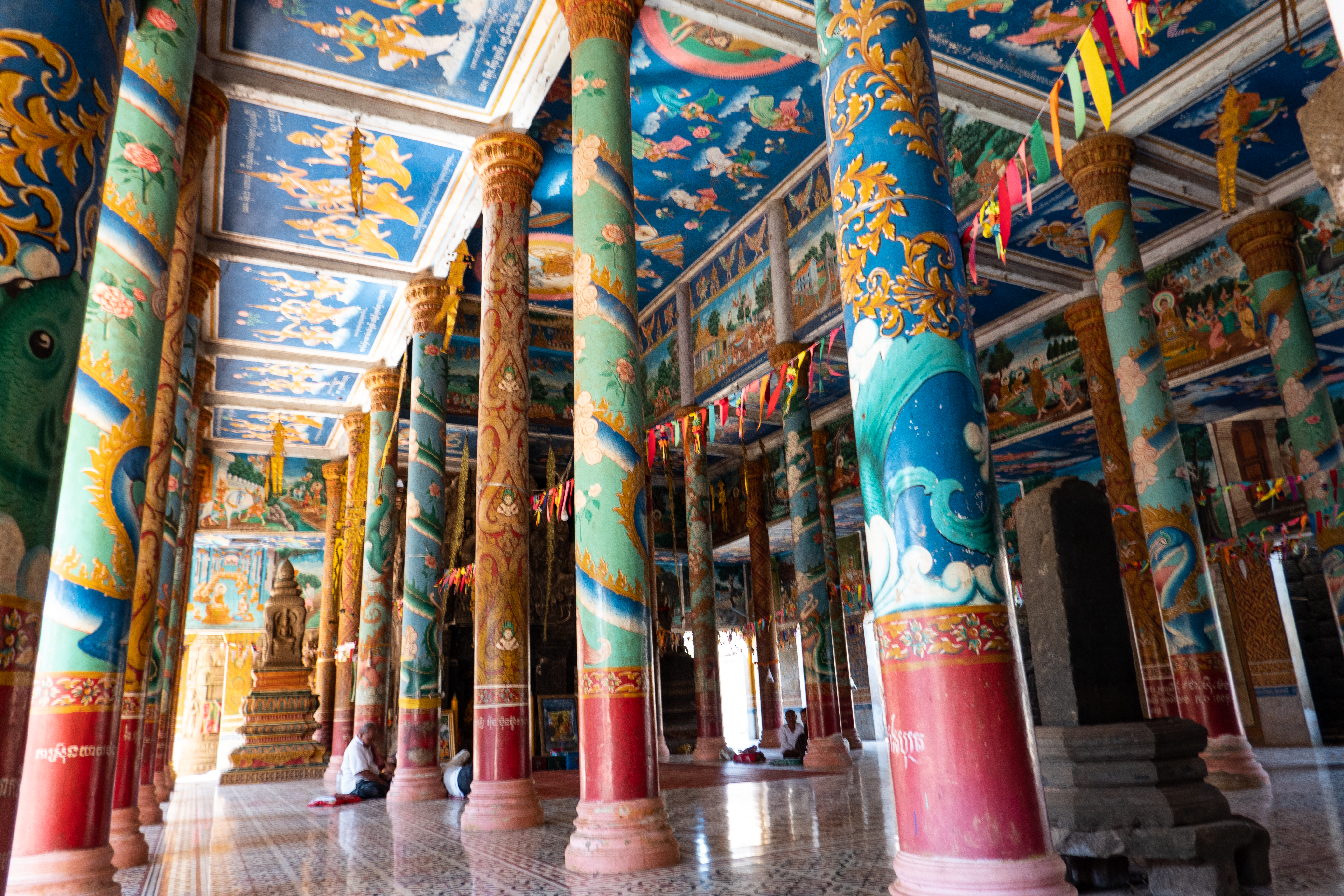Banteay Prei Nokor on:
[Wikipedia]
[Google]
[Amazon]
Banteay Prei Nokor ( km, បន្ទាយព្រៃនគរ) is an ancient
 The monument was built out of
The monument was built out of
temple
A temple (from the Latin ) is a building reserved for spiritual rituals and activities such as prayer and sacrifice. Religions which erect temples include Christianity (whose temples are typically called churches), Hinduism (whose temples ...
complex in the northwest of Kompong Cham, Cambodia
Cambodia (; also Kampuchea ; km, ·ûÄ·ûò·üí·ûñ·ûª·ûá·û∂, UNGEGN: ), officially the Kingdom of Cambodia, is a country located in the southern portion of the Indochinese Peninsula in Southeast Asia, spanning an area of , bordered by Thailan ...
.
Known locally as temple of "Wat Nokor in Khum of Kompong Siem", or "Wat Angkor", around 2km from the provincial capital Kampong Cham (city)
Kampong Cham ( km, ក្រុងកំពង់ចាម) is the capital city of Kampong Cham Province in eastern Cambodia. It is the 12th largest city in Cambodia with a population of 61,750 people (2021) and is located on the Mekong River. ...
. though a sign at the entrance now officially designates the name of the temple as Nokor Bachey Temple ( km, ·ûî·üí·ûö·û∂·ûü·û∂·ûë‚Äã·ûì·ûÇ·ûö‚Äã·ûî·û∂·ûá·üê·ûô).
Layout
The complex faces east at a bearing of 84.5°E, and covers 15ha. the site is composed of an outer rectangular laterite wall approximately 420x370m, an inner wall approximately 100x130m. A large reservoir orBaray
A ''baray'' ( km, ·ûî·û∂·ûö·û∂·ûô·ûé·üç) is an artificial body of water which is a common element of the architectural style of the Khmer Empire of Southeast Asia. The largest are the East Baray and West Baray in the Angkor area, each rectangu ...
( km, ·ûî·û∂·ûö·û∂·ûô·ûé·üç) some 950 meters long and 480 meters wide is located 350 meters east of the site. Now abandoned, the reservoir area was used in the mid 20th century as a hippodrome
The hippodrome ( el, ἱππόδρομος) was an ancient Greek stadium for horse racing and chariot racing. The name is derived from the Greek words ''hippos'' (ἵππος; "horse") and ''dromos'' (δρόμος; "course"). The term is used i ...
, evidence of which can still be seen by visitors.
History
 The monument was built out of
The monument was built out of sandstone
Sandstone is a clastic sedimentary rock composed mainly of sand-sized (0.0625 to 2 mm) silicate grains. Sandstones comprise about 20–25% of all sedimentary rocks.
Most sandstone is composed of quartz or feldspar (both silicates ...
and laterite, and dates from the last years of the reign of Jayavarman VII
Jayavarman VII, posthumous name of Mahaparamasaugata ( km, ជ័យវរ្ម័នទី៧, c. 1122–1218), was king of the Khmer Empire. He was the son of King Dharanindravarman II (r. 1150–1160) and Queen Sri Jayarajacudamani.
He w ...
. It is composed of a central tower surrounded by four laterite wall enclosures. The central tower of the temple of Wat Nokor is decorated with motifs characteristic of Bayon
The Bayon ( km, ·ûî·üí·ûö·û∂·ûü·û∂·ûë·ûî·û∂·ûô·üê·ûì, ) is a richly decorated Khmer temple related to Buddhism at Angkor in Cambodia. Built in the late 12th or early 13th century as the state temple of the King Jayavarman VII ( km, ·ûñ·üí·ûö·ü ...
with Buddhist scenes on the pediments.
The temple complex is believed to have been the headquarters of Jayavarman VII
Jayavarman VII, posthumous name of Mahaparamasaugata ( km, ជ័យវរ្ម័នទី៧, c. 1122–1218), was king of the Khmer Empire. He was the son of King Dharanindravarman II (r. 1150–1160) and Queen Sri Jayarajacudamani.
He w ...
for a time, from where he extended his influence over nearby principalities.
It has a number of distinguishing characteristics other than the fact that it is the largest ancient temple complex in Kampong Cham Province. One of these characteristics alludes to the fact that it is built of black sandstone, which causes it to stand out from other temples of the period which are often built of brick or reddish sandstone. The temple has an inscription which is open to visitors to see (and even touch) in the central pavilion. Wat Nokor Bachey boasts a 'Chartres' effect in which a more modern temple of a very different style has been built over and around the original Angkorian structure creating a blend of architectural styles.
There are many legends surrounding the origin of the temple but the most popular one has Oedipal overtones. According to this legend, the temple was built by a king who accidentally killed his father and married his mother. As recounted in the Greek legend, this king was put out by his father after a seer told him that his son would kill him. The son, however, did not die and returned to his kingdom not knowing that his father was the king. After quarreling on the road, the son killed the king and married his queen who was his mother. Upon discovering his crime, the young man built Wat Nokor in penance for his crime.
World Heritage status
This site was added to theUNESCO
The United Nations Educational, Scientific and Cultural Organization is a specialized agency of the United Nations (UN) aimed at promoting world peace and security through international cooperation in education, arts, sciences and culture. It ...
World Heritage
A World Heritage Site is a landmark or area with legal protection by an international convention administered by the United Nations Educational, Scientific and Cultural Organization (UNESCO). World Heritage Sites are designated by UNESCO for ...
Tentative List on September 1, 1992 in the Cultural category.
The temples includes many valuable statues and more modern additions, such as the representation of Dam Din.
References
External Links
{{coord, 11, 59, 59, N, 105, 26, 20, E, region:KH_type:city_source:kolossus-dewiki, display=title Buildings and structures in Kampong Cham province Angkorian sites in Kampong Cham Province